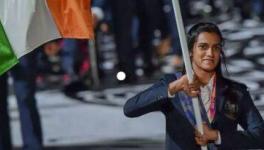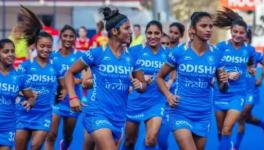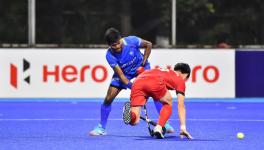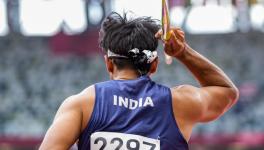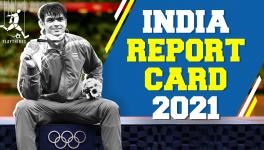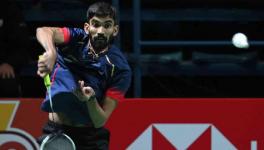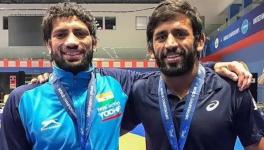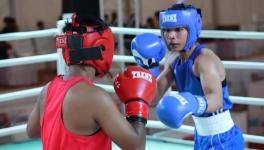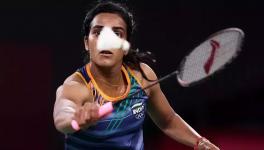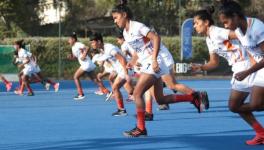Indian Hockey Gold at Tokyo Olympics: A Reality Then, a Dream Now
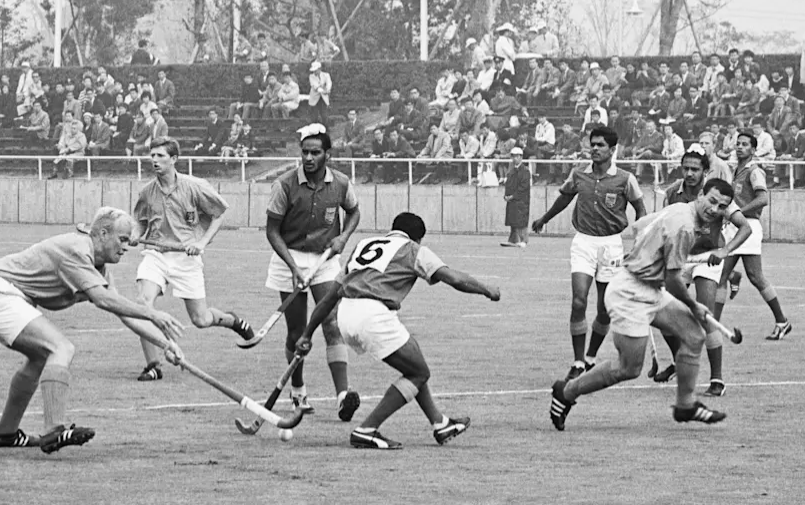
Indian hockey team played exceptionally well at Tokyo 1964. From October 11 to 23, the Charanjit Singh-led side defied the heavy schedule of playing nine matches in 13 days and won seven – the biggest prize of beating Pakistan 1-0 at the Komazawa Hockey Stadium in the final (Pic: Olympics.com).
The Ramesh Saigal directed film, “Shaheed” was released in March 1948 and was the biggest commercial success of the year in Bollywood. The Dilip Kumar-Kamini Kaushal starrer had several popular songs, including the one rendered jointly by Mohammed Rafi and Khan Mastata.
“Watan ki raah mein watan ke naujawan shaheed ho”, was an instant hit with the people of the newly-independent nation. But like it mostly happens with film music, this song was hardly in circulation in 1964 when a bunch of youngsters decided to sing it on a daily basis.
“This was our unofficial team song for the 1964 Tokyo Olympics,” says Gurbux Singh, a member of the Indian hockey team in Tokyo.
“In fact, we started singing this song long before we arrived in Tokyo. Before the Olympics, we toured New Zealand and Malaysia to play a series of matches as part of our preparations. There we made the decision to sing this song daily while travelling in the team bus. It ended only after we managed to regain the gold medal in Tokyo,” adds Gurbux.
Click | For More Coverage of the Tokyo Olympics From Newsclick Sports
If the team were charged up to get back the Olympic gold that they surrendered in Rome, it was easily understandable. The reputation of Indian hockey as world beaters was much at stake. Pakistan were the new superpower of the sport, something they proved beyond doubt in Rome and two back-to-back Asian Games in 1958 and 1962.
The determination of the boys did not go to waste. India did exceptionally well in Tokyo. From October 11 to 23, the Charanjit Singh-led side defied the heavy schedule of playing nine matches in 13 days and won seven – the biggest prize of beating Pakistan 1-0 at the Komazawa Hockey Stadium in the final. Two of the group league matches against Germany and Spain were drawn and in both, India were criticized for being an ill-tempered side. India, it looked, were too eager to steamroll all opposition.
But then, a careful look in the history of Indian hockey would prove that not everything was hunky-dory between Rome 1960 and Tokyo 1964. The selection of the team for 1960 Olympics was bitterly criticized in the media – the presence of three players, who wasn’t even selected, at the Rome Olympic Village was described as a kind of scam despite repeated denials from the Indian Hockey Federation (IHF).
The national body did learn from the experience, albeit temporarily. For a change, there were not many complaints when the team for Tokyo 1964 was announced in Jalandhar on July 31. Few eyebrows were raised about the absence of Inam-ur Rahman, but it died down quickly. The exceptionally talented striker was involved in some disciplinary issues with the Bengal Hockey Association at the time of selection. Moreover, it was claimed the selectors were not exactly happy with Inam’s performance in the “Test” matches against Kenya on home turf in April.
Inam-ur Rahman didn’t find a place, but Ali Sayed did. The forward didn’t start in any of the matches in Tokyo, but still created a record of sorts. Ever since Latif-ur Rahman and Akhtar Hussain made the Indian team for the 1948 London Games, no other Muslim hockey player could gain selection for the Olympics. Ali Sayed did play a few matches in preparatory tours before the Olympics, but had to sit out in Tokyo. There was no substitution rule in hockey those days.
The team was well-balanced with the best available talent. Goalkeeper Shankar Laxman was on his third Olympics and a rock-solid last man in the rear. His brilliant saves in the 1956 final against Pakistan made him a legend in the team. Defender Prithipal Singh was classy and was known as the “King of short-corners” (now penalty corners).
Also Read | India at Tokyo Olympics: Full Schedule, Fixtures and Squads
In the midfield were Mohinder Lal and Charanjit Singh, who were by far the world’s best players in their positions. The forwardline had some dazzling players though Harbinder Singh was the biggest star with his lightning speed, stick work and scoring ability. Harbinder and Prithipal did the bulk of the scoring for India, who by the end of Tokyo Games had struck 22 goals and conceded five.
After the Rome experience, the IHF was determined to do anything to get the gold medal back. A long tour of New Zealand and Malaysia was planned. The team left the shores two months before the Tokyo Olympics actually began. Barring a few hiccups, the twin-tour went off smoothly, but the injury to midfielder Rajinder Singh against the Kiwis was a worry. Gurbux was drafted as the midfielder on a temporary basis. But he proved so good in the unusual role that none could dare to bench the Calcutta-based player thereafter.
“Frankly, I wasn’t keen to play the half-back,” admits Gurbux. “As a full-back, my place in the starting eleven was assured. So, why should I try myself in a new position, I thought. But the team management talked about national interest and all that stuff and I had to agree. Today, looking back, I think I didn’t do badly,” says the 85-year-old with a laugh.
Indian hockey, over the years, has often remained faction ridden. Several times in the past it was the lack of team spirit that let the team down despite abundance of talent. The 1964 team was definitely an exception.
When Charanjit was made the captain ahead of seniors like Shankar Laxman, Udham Singh or Haripal Kaushik, many expected a banner of revolt could be raised within the team. But the team remained a well-knit combination. So much so, when Harbinder, the livewire of the forwardline, was sidelined because of an injury in Tokyo and India played an unimpressive 1-1 draw against Germany (without Harbinder and Mohinder Lal), Udham massaged Harbinder through the night to get him fit.
Once Harbinder was in full flow in the 6-0 win against Hong Kong, there was no looking back. Canada, the Netherlands, Australia, and Pakistan – none could pose any threat to India in the next four matches. Udham, by then at the fag end of a truly glittering career, could find a place in the eleven in only one match in Tokyo against Spain, but his feelings for the team remained unchanged.
Also Read | Stats the Way Forward, Feel Indian Football Bosses; National Coach Igor Stimac Gets Extension
After a 3-1 triumph over Australia in the semifinal, the 1-0 victory against Pakistan in the title round was the real icing on the cake. The keenly fought encounter was decided in India’s way in the fifth minute of the second half.
As Munir Ahmed stopped Prithipal Singh’s penalty corner hit with his leg, the umpire ordered a penalty stroke. Pakistan goalkeeper Abdul Hamid had no answer to Mohinder Lal’s slightly rising hit. The goal made all the difference. Pakistan made many desperate attempts to get even, but Laxman remained unfazed. Indian fans broke into wild celebrations once the umpiring duo from Germany and the Netherlands called time.
It was a fairytale episode of Indian hockey – not even half a dozen players from the squad are now there to tell the tale of the golden moment. As Gurbux says: “At times, few of us speak to each other on phone.
“We still laugh at things like how a dozen of us were packed in a barrack-like room by the IHF for the preparatory camp in Jalandhar. The federation those days only gave players two sets of jerseys, nothing else. The boys had to buy their own shoes. That was the custom. The blazers were only given on arrival in Singapore on the way to Tokyo. But those were different days, so nothing to complain about.”
The camaraderie and team spirit that helped India regain their top position in world hockey did not last long. What happened over the issue of captaincy when the team was to leave for the next Olympics in Mexico remained one of India’s biggest sporting controversies. As other nations marched ahead, India slowly slipped from the high pedestal of world hockey over the years.
Indian hockey teams have returned home empty handed from nine consecutive Olympics since 1984. As India kick off their journey in Tokyo 2021 on July 24 at Oi Hockey Stadium, a few old guards like Charanjit Singh (90), Gurbux Singh (85) and Harbinder Singh (77) would be following them keenly hoping the youngsters repeat the feat they achieved in the Japanese capital 57 years ago.
Get the latest reports & analysis with people's perspective on Protests, movements & deep analytical videos, discussions of the current affairs in your Telegram app. Subscribe to NewsClick's Telegram channel & get Real-Time updates on stories, as they get published on our website.









